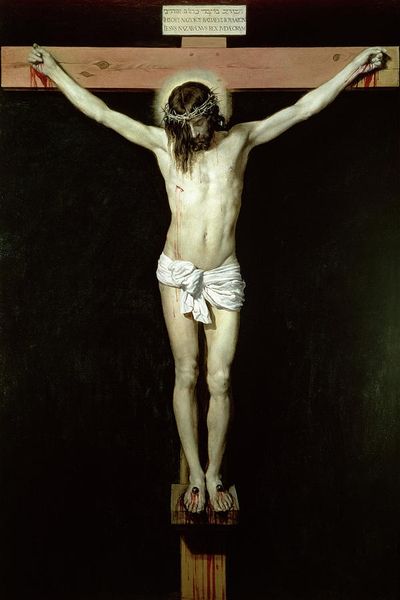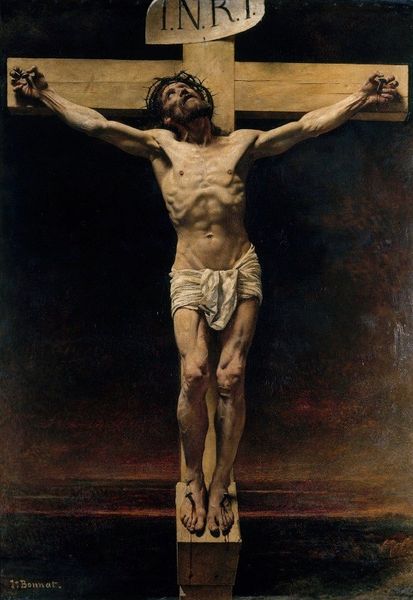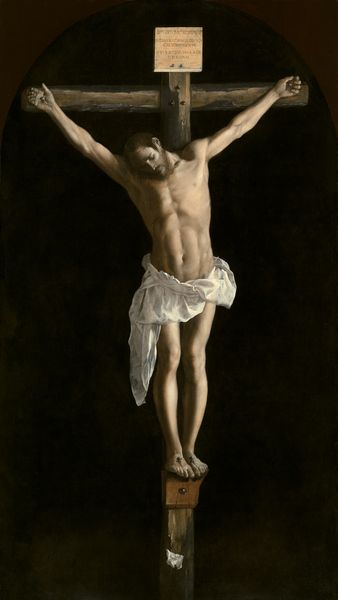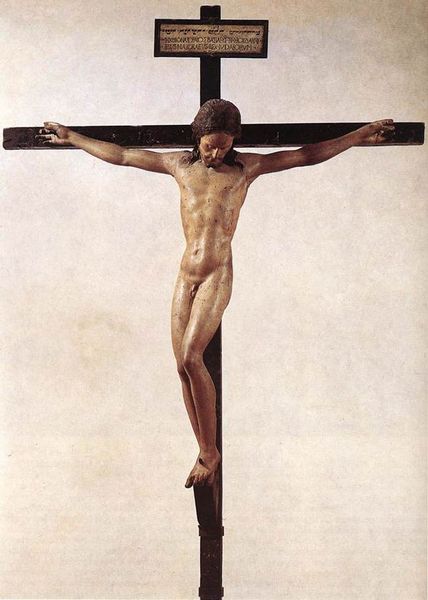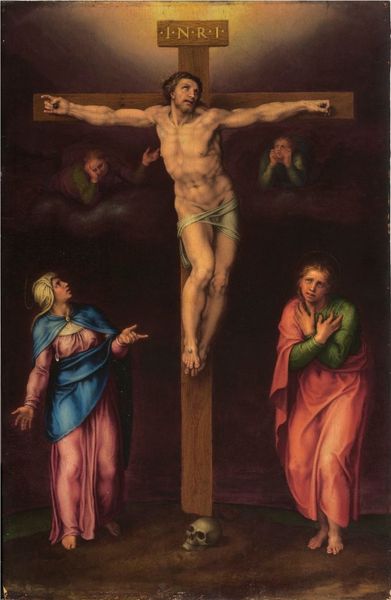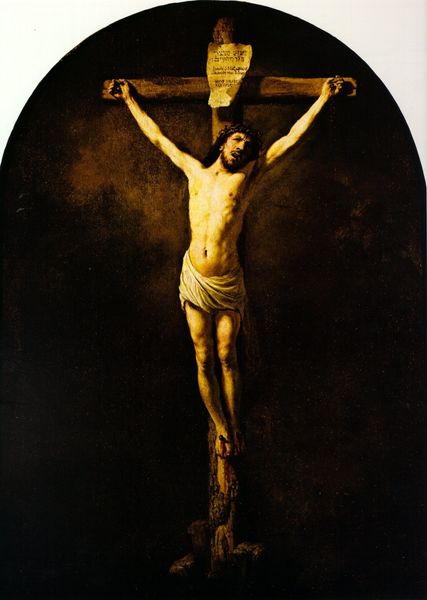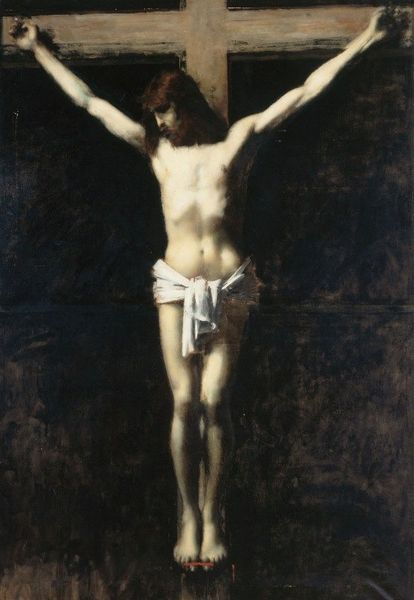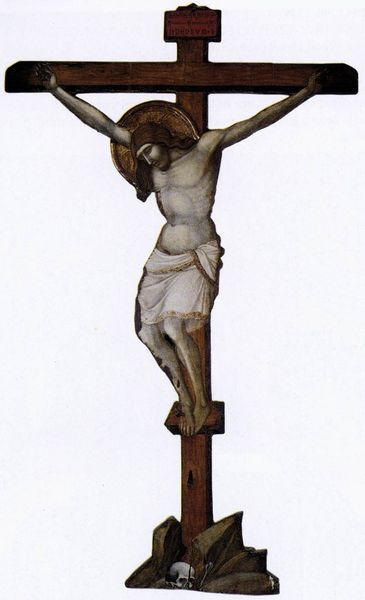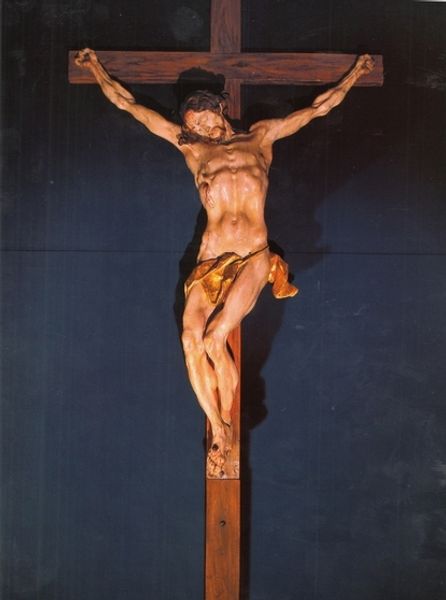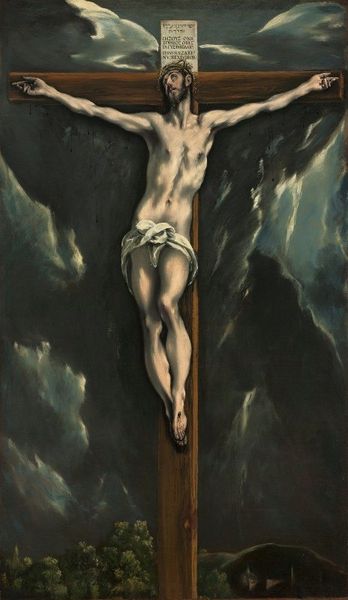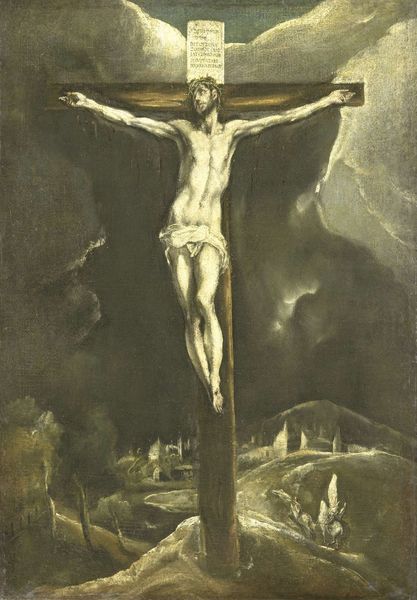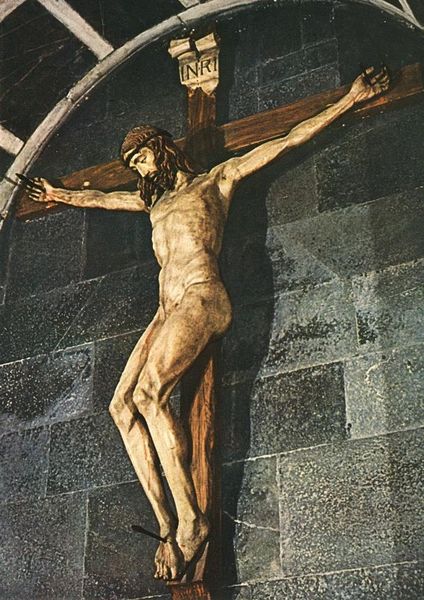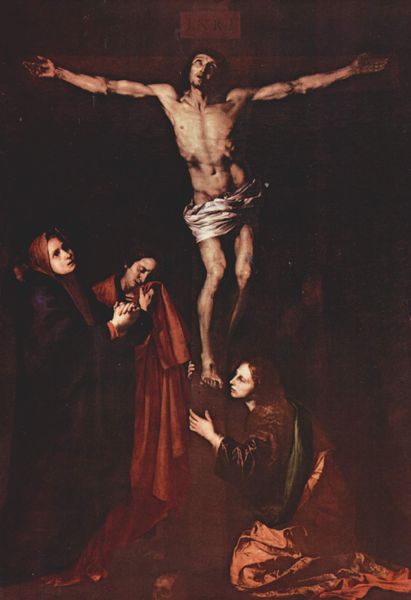
painting, oil-paint
#
allegory
#
painting
#
oil-paint
#
mannerism
#
figuration
#
crucifixion
#
history-painting
#
italian-renaissance
#
nude
#
realism
Copyright: Public domain
Editor: Here we have Agnolo Bronzino’s “Christ on the Cross,” painted around 1545 using oil paint. What strikes me immediately is the contrast between the smooth, almost polished skin of Christ and the rough, splintered wood of the cross itself. What do you make of that stark difference in materiality? Curator: It's a brilliant observation. Bronzino, a master of the Mannerist style, was deeply concerned with the material world, both literally and figuratively. Look at the labour embedded in the smooth finish – it reflects not only Bronzino’s skill but the socioeconomic context that afforded such refinement. Contrast this laborious refinement with the "honesty" of the unadorned cross. Editor: So, the material contrast is highlighting social distinctions even within the scene? Curator: Precisely. And think about the implications of using expensive oil paint for a subject who represents humility and sacrifice. The very act of painting becomes a statement about patronage, power, and the consumption of art. Are we, as viewers, complicit in this system? Editor: That makes me see the painting in a completely new light. It’s not just a religious image; it's a commentary on the economic and social forces at play during the Renaissance. It feels much more complex and self-aware now. Curator: Indeed. By focusing on the materials and production, we move beyond simple iconographic readings and start to grapple with the complicated relationship between art, labor, and society. Now consider: would this piece be so impacting if it were a fresco on plaster? Editor: That is an important element. Considering all materials brings to bear new meanings to unpack. Thank you. Curator: The pleasure was mine.
Comments
No comments
Be the first to comment and join the conversation on the ultimate creative platform.
